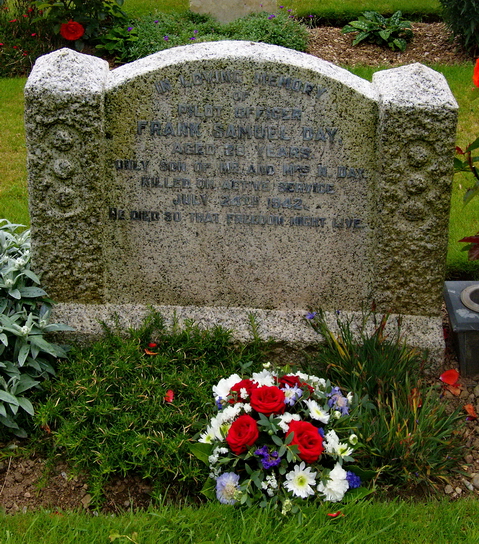
Frank Samuel Day
Pilot Officer (Observer), responsible for navigation and bomb aiming.
Royal Air Force Volunteer Reserve 123055
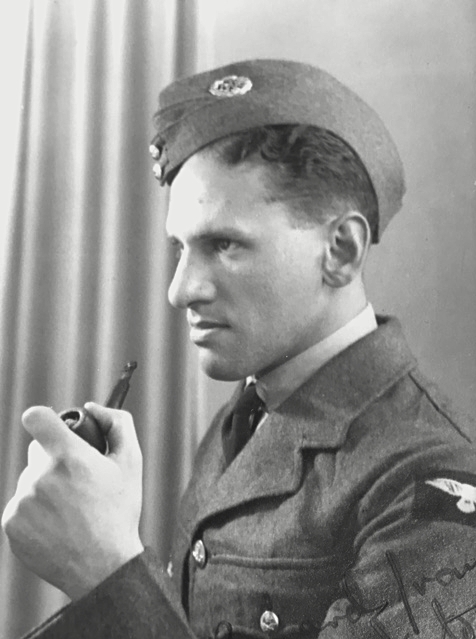
Frank was born Frank Samuel Deitchman in Hackney on the 21st July 1914. His father Nathaniel was an eminent theatrical agent, who lived to the ripe old age of 98, eventually being awarded an MBE. His mother Rika, nee Kanter, came from Amsterdam in the Netherlands, they were engaged there on Tuesday 2nd August 1910 according to the Amsterdam edition of the Algemeen Handelsblad published the following day. They married in February 1912. Frank had an older sister, Gladys, born in 1912, unfortunately she didn't survive. Frank's will makes no mention of any siblings. The family changed its name in the Twenties, although Nathaniel had been using the name "Nat Day" professionally for some years by then. Nat Day was a successful businessman; the family became wealthy enough to move out of the East End of London to the more salubrious West End at some time before the Second World War. The little we know of Frank's life prior to enlisting with the RAF Volunteer Reserve, which he did on the 30th August 1939, is that he worked as a journalist. He started his career in southwest London in the November of 1932 before moving to central London in the April of 1934. Frank joined the staff of the Bath Weekly Chronicle and Herald in 1935 to help with coverage of the general election and impressed enough to be retained, working from their Trowbridge office. His obituary, from the 1st August 1942 edition, describes him as "vital and versatile". He had a keen interest in amateur dramatics and was an accomplished horseman and fencer. Well-educated, he was a dedicated journalist and was instrumental in founding the West Wiltshire and North Somerset branch of the National Union of Journalists, becoming its first secretary in the December of 1936. Finally, Frank moved to Newcastle in June 1938 to broaden his horizons; he worked there for the Evening Chronicle as their theatre critic and feature writer.
He enlisted in Newcastle on the day the Germans invaded Poland, the 1st of September 1939. There seems to be a small discrepancy about the date he joined between his movements list and his promotion record; perhaps the latter was backdated for administrative purposes. He was called up on the 9th October and arrived at his first operational squadron, 248, on the 23rd March 1940, being promoted to Acting Sergeant the next day. The training period was very short at this stage of the war, especially considering the variety of tasks that an observer was responsible for. This appointment was made permanent on the 29th September. With 248 squadron he flew in Bristol Blenheims, which were used for anti-shipping raids, convoy escort and reconnaissance missions. 248 was one of the squadrons equipped with the Blenheim IVF fighter variant, which acquitted itself admirably in combat even against the Messerschmitt 109. In the desperate circumstances of the Battle of Britain the Blenheim squadrons made a valuable contribution. The squadron was based at Sumburgh in the Shetlands throughout the battle; at that time the aerodrome was still under construction and many of the the squadron's personnel were still sleeping under canvas as the winter set in. Squadrons based further south saw much more action than 248, 235 squadron was decimated by the end of the battle.
The Bristol Blenheim Mk IV fighter

Frank's job in the Blenheim IV fighter was primarily navigation as this version, used for convoy escort, was unable to carry bombs due to the gun pack. In the June of 1941 the squadron was converted to Bristol Beaufighters and, after a period of retraining, Frank was posted to 86 Squadron.
For whatever reason Frank flew few missions with 86 squadron; a total of fourteen in a year. It didn't help that the entire squadron spent the whole of October 1941 in training. Frank was either injured or ill early in 1942; his service record shows that he was discharged from a Royal Navy hospital in Plymouth on the 26th February 1942. We do know that 86 were based at St Eval at the time; we don't know why Frank was in hospital. The last mission he flew prior to his hospitalisation was on the 6th February; the Operational Record Book makes no mention of anybody being injured or any trouble at all.
After being promoted to Temporary Flight Sergeant on the 1st April 1942, Frank was discharged from the RAF on the 3rd May and then commissioned as a Pilot Officer (Observer) the following day. This rather sudden sequence of promotions makes sense if the move to Malta was already known at this time and Frank was being prepared for the navigation leader role. As the most experienced crews were kept on in the UK for the squadron's conversion to Liberators this might well be the case. He was "Killed on Active Service" on the 24th July, three days after his twenty-eighth birthday. The job title Observer was later changed to Navigator - a more accurate description of what had by then become a more specialised role. During his two years of operational service Frank flew with many different crews in many different aircraft. His competence as a navigator is attested by his having often flown with Squadron Leader Anstead and on one occasion the safe return of the aircraft to a different base in poor weather. Aircraft navigation was a difficult job especially over water. The methodologies available to Frank in 1942 differed very little from their naval equivalents of Nelson's era. There was no GPS, no radar or even any way of knowing the aircraft's altitude relative to the terrain below. Far too many aircraft in this period were lost in poor visibility, often while still in training.
The Battle of Britain London monument website has a page dedicated to Frank. His name is on the Battle Of Britain London Monument, as can be seen in this photo kindly supplied by Edward McManus.This page has more of Edward's photos both of the opening ceremony London Battle Of Britain monument and of the monument itself.
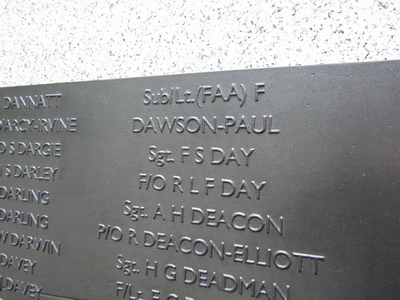
The following have been transcribed from Frank's service record.
Movements
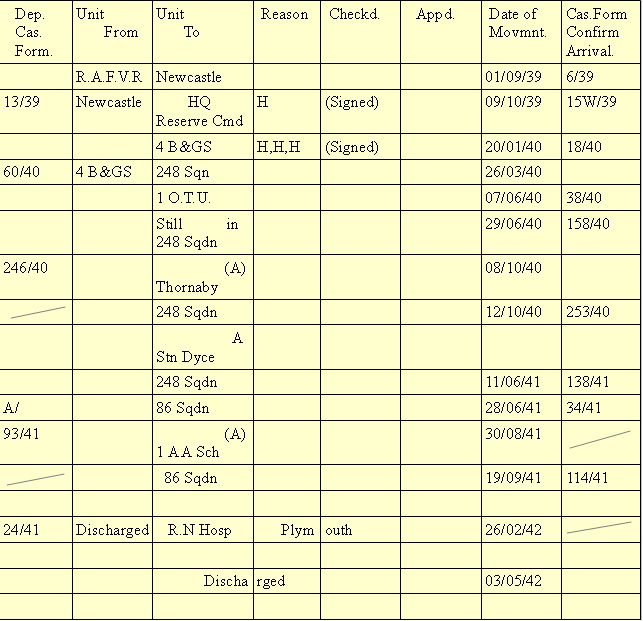

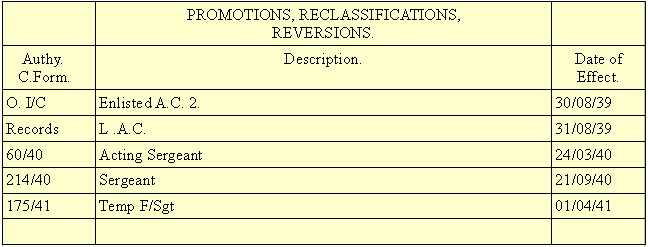
A.C. 2. - Aircraftman 2nd Class, L.A.C - Leading Aircraftman.
Frank's gravestone in Illogan Cemetery
